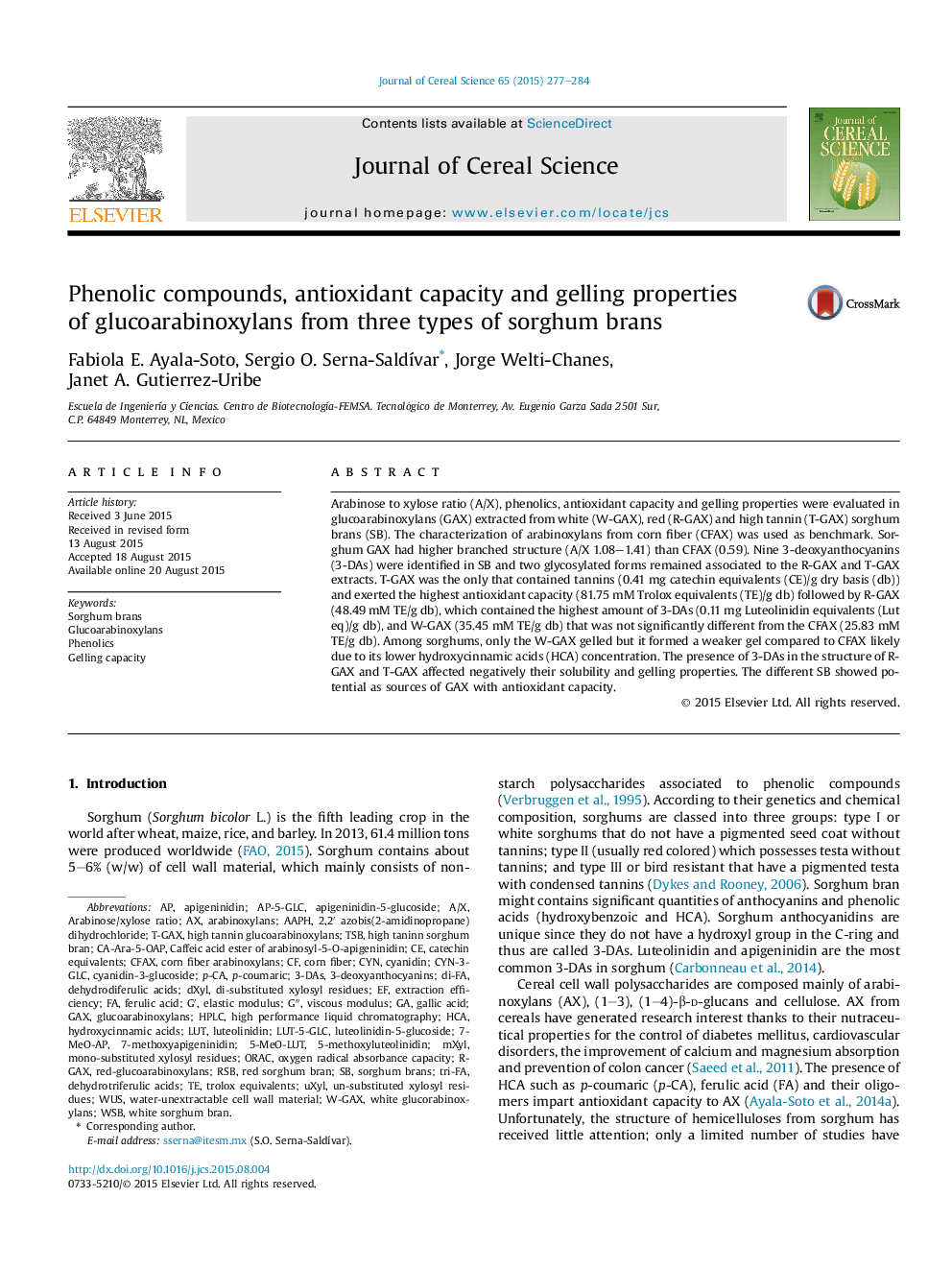| Article ID | Journal | Published Year | Pages | File Type |
|---|---|---|---|---|
| 6377837 | Journal of Cereal Science | 2015 | 8 Pages |
Abstract
Arabinose to xylose ratio (A/X), phenolics, antioxidant capacity and gelling properties were evaluated in glucoarabinoxylans (GAX) extracted from white (W-GAX), red (R-GAX) and high tannin (T-GAX) sorghum brans (SB). The characterization of arabinoxylans from corn fiber (CFAX) was used as benchmark. Sorghum GAX had higher branched structure (A/X 1.08-1.41) than CFAX (0.59). Nine 3-deoxyanthocyanins (3-DAs) were identified in SB and two glycosylated forms remained associated to the R-GAX and T-GAX extracts. T-GAX was the only that contained tannins (0.41 mg catechin equivalents (CE)/g dry basis (db)) and exerted the highest antioxidant capacity (81.75 mM Trolox equivalents (TE)/g db) followed by R-GAX (48.49 mM TE/g db), which contained the highest amount of 3-DAs (0.11 mg Luteolinidin equivalents (Lut eq)/g db), and W-GAX (35.45 mM TE/g db) that was not significantly different from the CFAX (25.83 mM TE/g db). Among sorghums, only the W-GAX gelled but it formed a weaker gel compared to CFAX likely due to its lower hydroxycinnamic acids (HCA) concentration. The presence of 3-DAs in the structure of R-GAX and T-GAX affected negatively their solubility and gelling properties. The different SB showed potential as sources of GAX with antioxidant capacity.
Keywords
p-CAWSBGAXWUSORACArabinoxylansRSBAAPHTSBHCALUTG″G′apigeninidinHydroxycinnamic acidsExtraction efficiencyA/XTrolox EquivalentsCyanidinCyanidin-3-glucosideoxygen radical absorbance capacityFerulic acidPhenolicsCorn fiberCYNluteolinidinElastic modulusviscous moduluscatechin equivalentshigh performance liquid chromatographyHPLCGallic acid
Related Topics
Life Sciences
Agricultural and Biological Sciences
Agronomy and Crop Science
Authors
Fabiola E. Ayala-Soto, Sergio O. Serna-SaldÃvar, Jorge Welti-Chanes, Janet A. Gutierrez-Uribe,
